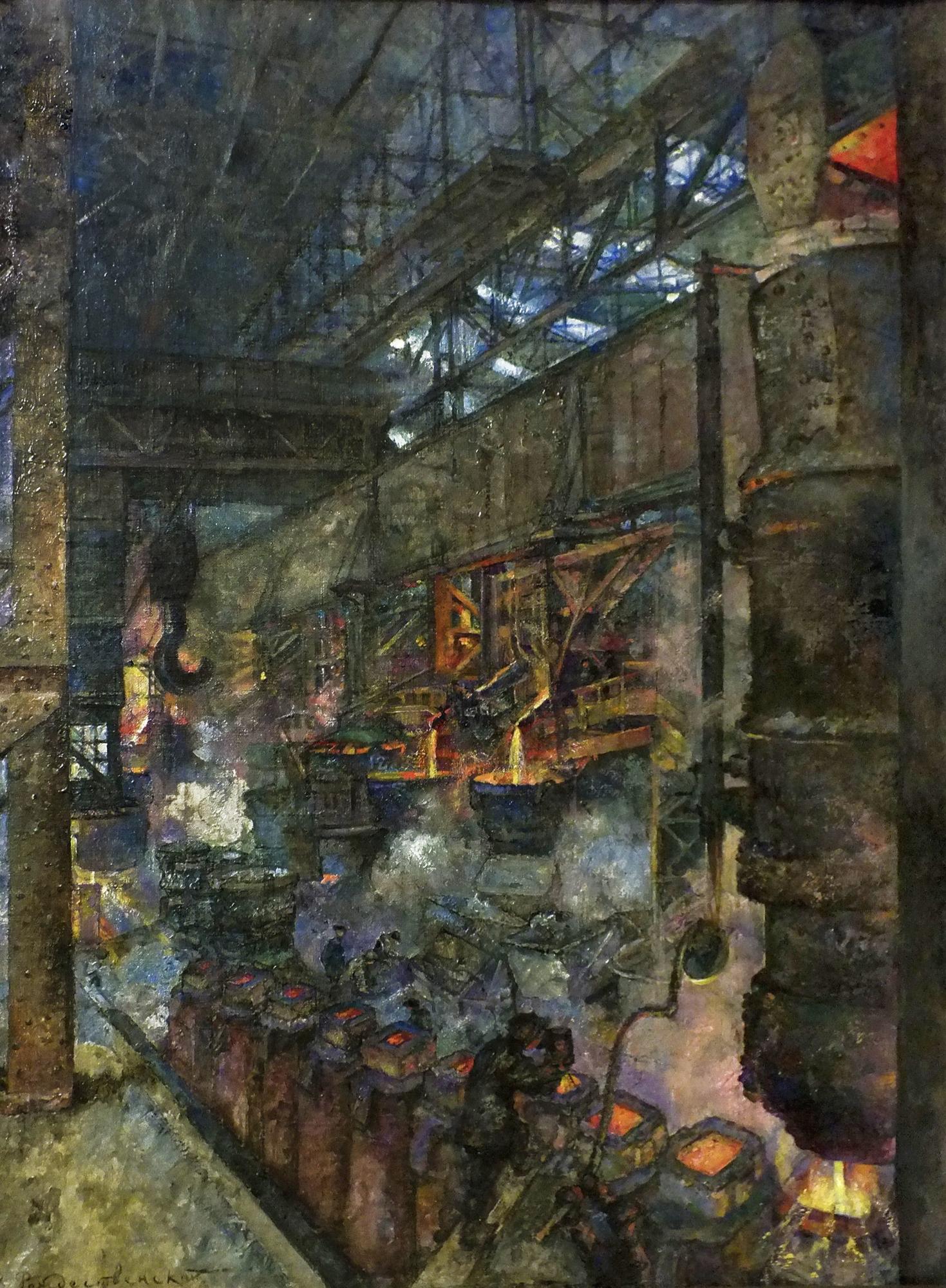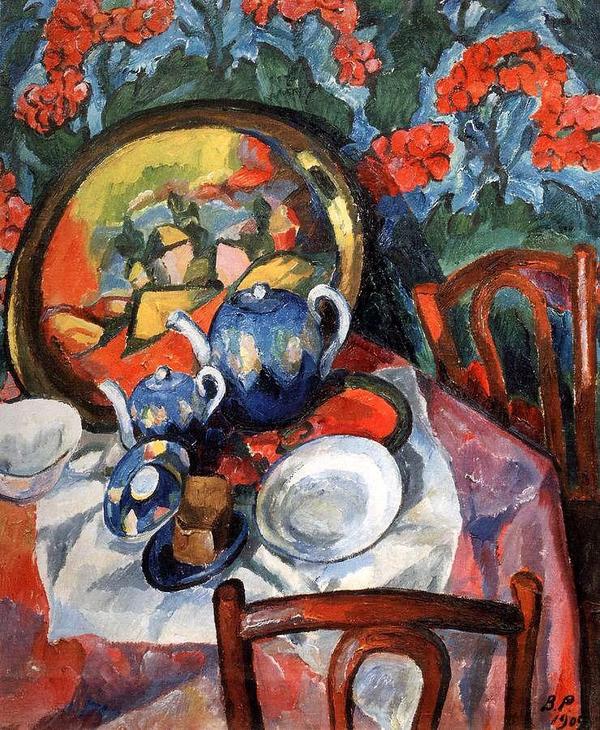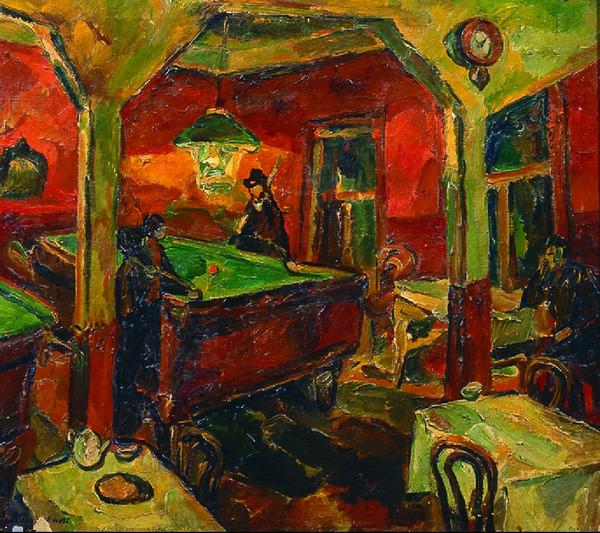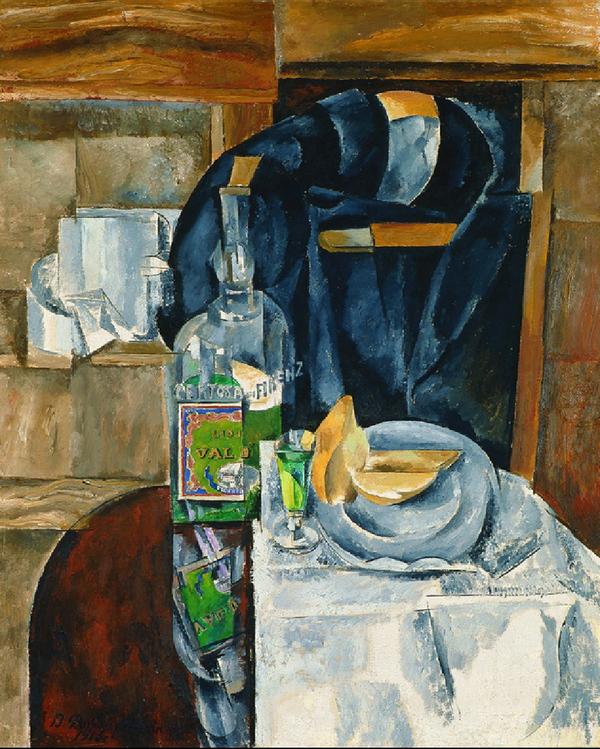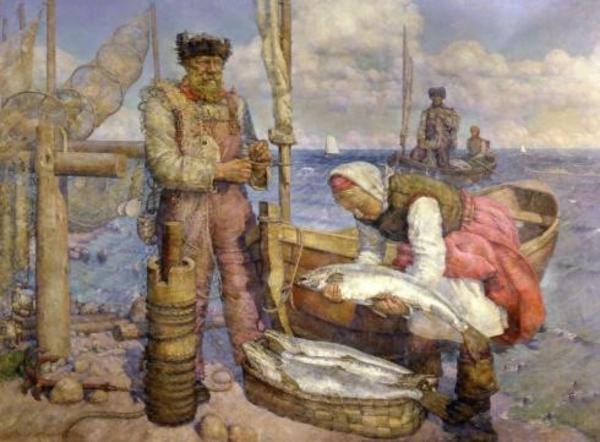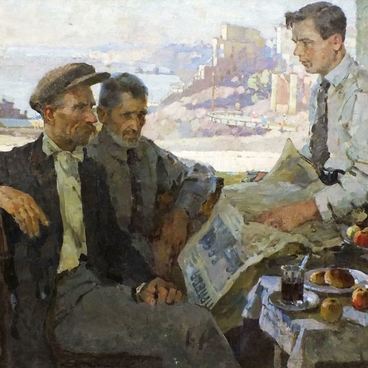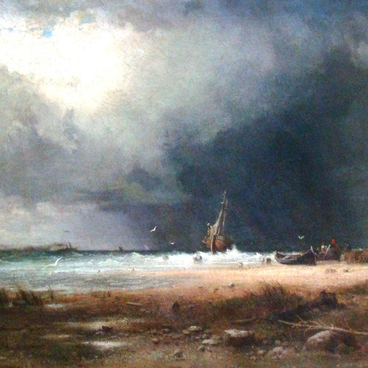Vasily Rozhdestvensky’s painting “Metallurgical Plant” with the image of a working foundry belongs to the later period of his creature. At this time, the artist is travelling a lot across the young Soviet country. The main themes of his works in the 30s and 40s of the XX century are socialist construction, industrial enterprises, portraits of masters and workers. This is directly evidenced by the names of personal exhibitions of Rozhdestvensky, held from 1935 to 1945: Nature and construction in the USSR, Nature and architecture, Portraits of masters of folk art. The paintings of the 30s are very different from the early paintings that were full of revolutionary artistic ideas.
Vasily Rozhdestvensky, a son of a priest, gave up his career as a clergyman for the sake of painting. In 1900 he left the seminary, left his native Tula and came to Moscow to study there at the Moscow School of Painting, Sculpture and Architecture. When the school was closed due to the revolutionary events of 1905, Rozhdestvensky joins the revolutionaries, actively participates in the revolutionary movement for which he even gets briefly imprisoned. A year later, he returned to the school to study painting with Konstantin Korovin, Abram Arkhipov, Valentin Serov, Isaac Levitan and Leonid Pasternak.
Vasily Rozhdestvensky, a son of a priest, gave up his career as a clergyman for the sake of painting. In 1900 he left the seminary, left his native Tula and came to Moscow to study there at the Moscow School of Painting, Sculpture and Architecture. When the school was closed due to the revolutionary events of 1905, Rozhdestvensky joins the revolutionaries, actively participates in the revolutionary movement for which he even gets briefly imprisoned. A year later, he returned to the school to study painting with Konstantin Korovin, Abram Arkhipov, Valentin Serov, Isaac Levitan and Leonid Pasternak.
